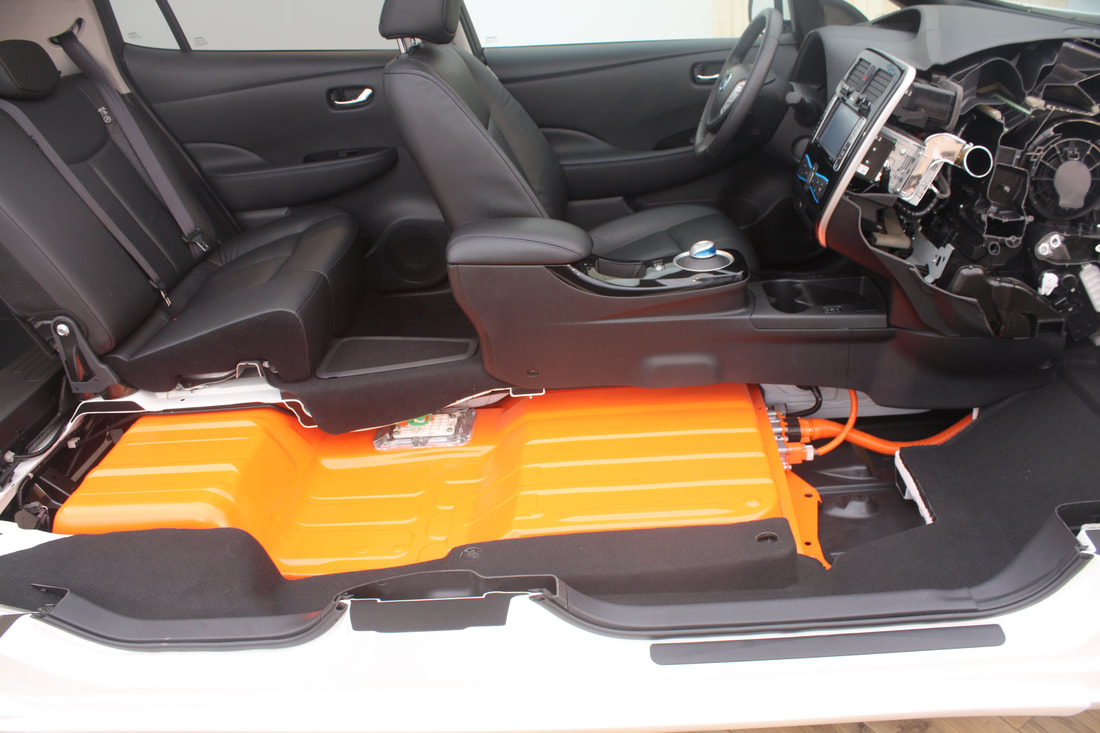Electric Vehicles - What are they made of?
Electric Vehicles include various components like traction batteries, electric motor, traction control system, charging port, suspension system, regenerative braking system, emergency braking system and other auxiliary components.
Main principle of electric vehicles
When the car is switched on the current is initiated from the battery. The power electronic controller takes the current from the battery and transfers the same to the motor by converting it from DC to AC. The traction motor works seperately on the current by coverting electric energy into mechanical energy. This mechanical energy is transferred to wheels which helps in driving the vehicle.
When the car is switched on the current is initiated from the battery. The power electronic controller takes the current from the battery and transfers the same to the motor by converting it from DC to AC. The traction motor works seperately on the current by coverting electric energy into mechanical energy. This mechanical energy is transferred to wheels which helps in driving the vehicle.
Main components of electric vehicles
|
Electric Traction Batteries
Most of the batteries used in the market are generally lithium-ion. Lithium-ion batteries have higher life span (up to 10 years) (1). It means that they have higher life cycle stability, i.e the battery can be charged and discharged for maximum number of times before degrading to 80% of the original capacity. For example if a battery pack capacity of 40kWh is used over a ten years of time the battery pack still has the 32kWh of storage capacity. This increases the reliability of lithium-ion batteries. Current research is going on to bring up different battery chemistries which could be potentially used in the future not only for electric vehicles but also for other energy storage purposes. |
Traction Control System
Traction control monitors the steering and braking system of the vehicle. It manages the oversteering and understeering by reducing the speed of the wheels by applying brakes. It also keeps the driver in commanding position if at all there is front wheel slippage by controlling the amount of energy transmitted to wheels (2).
Traction control monitors the steering and braking system of the vehicle. It manages the oversteering and understeering by reducing the speed of the wheels by applying brakes. It also keeps the driver in commanding position if at all there is front wheel slippage by controlling the amount of energy transmitted to wheels (2).
Permanent Magnet Motors (PMM)
These motors are also termed as traction motors which are responsible for driving the electric vehicles. They are known to have higher torque, torque utilisation capacity and efficiency. They comprise certain metals often termed as Rare Earth Elements which are light weight, compact and durable. Neodymium is mostly used in such motors when high adhesive force is required (3). Traction motors have higher efficiency around 80% which means that the 80% of the power from the motor is utilised by the wheels.
These motors are also termed as traction motors which are responsible for driving the electric vehicles. They are known to have higher torque, torque utilisation capacity and efficiency. They comprise certain metals often termed as Rare Earth Elements which are light weight, compact and durable. Neodymium is mostly used in such motors when high adhesive force is required (3). Traction motors have higher efficiency around 80% which means that the 80% of the power from the motor is utilised by the wheels.
Regenerative Brake System
They are used in combination with conventional friction brakes. When kinetic energy is transferred from the wheels to the generator, the generator converts some part of this energy into electrical energy which is transferred to the battery pack. In this process of converting energy, resistance is created by the generator which is utilised to apply brakes and if more braking is needed then frictional brakes are applied (4).
They are used in combination with conventional friction brakes. When kinetic energy is transferred from the wheels to the generator, the generator converts some part of this energy into electrical energy which is transferred to the battery pack. In this process of converting energy, resistance is created by the generator which is utilised to apply brakes and if more braking is needed then frictional brakes are applied (4).
Emergency Braking System
Mostly during traffic it becomes difficult to keep hold of the car and apply brakes in case of rush. To help the driver in such situations electric vehicles are accompanied with emergency brakes (also termed as automated braking system) which measure the distance between any car which is ahead and aslo controls the speed of the vehicle. It informs the driver to slow down the speed and evenly applies the brakes in order to avoid accidents.
Mostly during traffic it becomes difficult to keep hold of the car and apply brakes in case of rush. To help the driver in such situations electric vehicles are accompanied with emergency brakes (also termed as automated braking system) which measure the distance between any car which is ahead and aslo controls the speed of the vehicle. It informs the driver to slow down the speed and evenly applies the brakes in order to avoid accidents.




